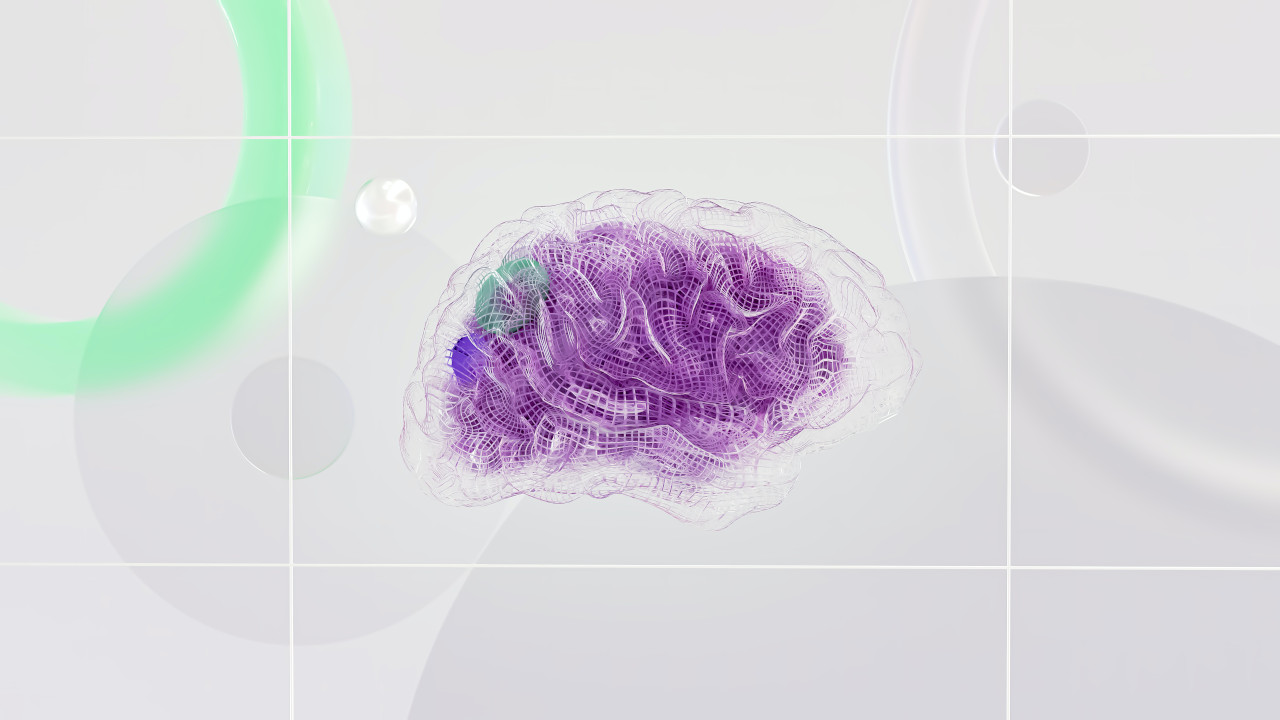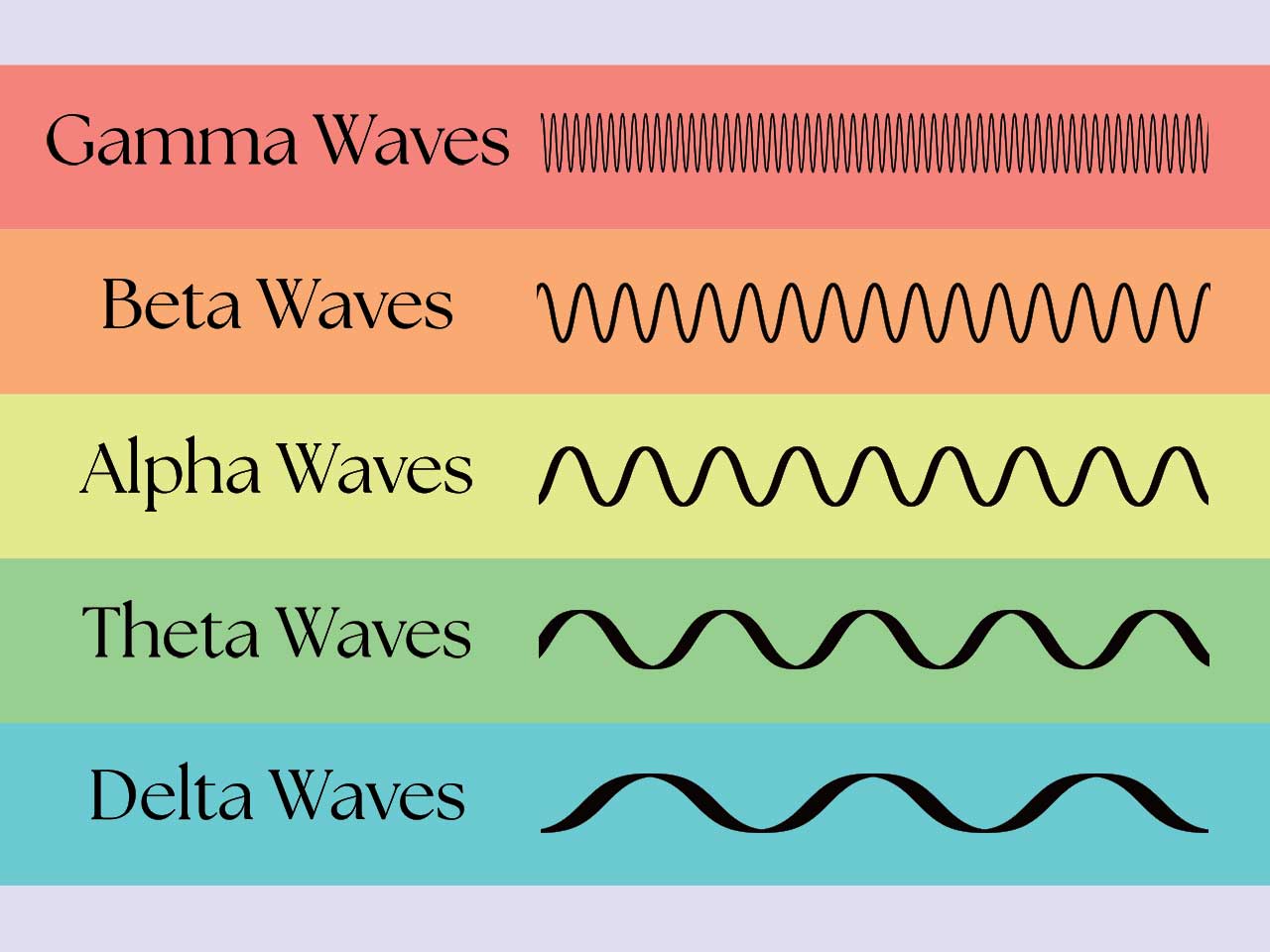Isochronic tones are audio stimuli that can be used to help entrain brain waves to a certain frequency and help you more easily access altered states of consciousness.
They work through auditory brainwave entrainment that uses consistent, evenly-spaced pulses of sound to stimulate the brain. When the brain is exposed to these regular pulses of sound, it tends to entrain, or synchronize, to the same frequency resulting in a change in mental state.
Isochronic tones were discovered in a scientific study by Dr. Arturo Manns in 1981 conducted at the Universidad de los Andes in Santiago, Chile.
His research found that isochronic tones produce a stronger brainwave entrainment effect when compared to binaural beats but there hasn’t been a peer-reviewed study that has confirmed his findings since then.
The key difference between isochronic tones and binaural beats — another popular form of brainwave entrainment — is that because they are single pulsating tone they can be listened to without headphones (whereas binaural beats involve the use of two different tones, one in each ear, which the brain perceives as a single pulsating tone).
Generally, isochronic tones are better for entrainment of higher frequencies brain waves such as gamma and beta waves while binaural beats are better for lower frequency waves such as alpha, theta and delta.
So, that’s why this guide is going to focus on isochronic tones for improving focus and concentration.
1. What Are The Benefits of Isochronic Tones?
Isochronic tones are most commonly used to boost focus and attention. They can also be effective for relaxation and meditation.
It is important to note that research on the use of isochronic tones for these purposes is limited, and more research is needed to fully understand their potential benefits.
However, given how accessible they are to listen to online you can easily try them out and see for yourself.
Here are some of the ways that isochronic tones have been found to be helpful:
1. Improved focus and concentration: By stimulating brainwave activity associated with alertness and attention, they may improve focus and concentration, especially for people with ADHD.
A systematic review of brainwave entrainment studies using binaural beats and isochronic tones concluded:
“Based on the data reviewed in this study, binaural beats and isochronic tones BWE may effectively modulate mood states, improving attention, and memory processes. Promising results were also obtained in subjects suffering from different CNS disorders, including ADHD, PD, epilepsy, chronic pain, and anxiety disorders.”
2. Enhanced relaxation and stress reduction: They may help to relax the body and mind and reduce stress by stimulating brainwave activity associated with relaxation and calmness.
A study done at Saybrook University in California with a small group found that isochronic tones in the Schumann Resonance frequency (7.83 Hz) helped with anxiety and mood:
“This research demonstrated that isochronic tones in the Schumann resonance frequency
could have a positive influence on anxiety and mood. The nature of isochronic tones as a nonprescription, non-invasive, and non-addictive mind-body approach might render them attractive
as either an adjunct or stand-alone treatment for anxiety. To learn of their potential, larger studies
in more controlled environments will be needed.”
They may also be effective for some people to increase creativity, improve sleep and for achieving states mindful peak performance like flow.
2. How To Listen To Isochronic Tones Correctly
If you want to properly experiment with isochronic tones to improve your focus and productivity then it’s important that you take a systematic approach.
Here is how to use isochronic tones for brainwave entrainment:
1. Choose an isochronic tone frequency geared for focus and concentration.
The best isochronic tones for improving your focus and sustaining your concentration for longer periods of time will probably be Medium Beta (15 – 20 Hz) Low Beta (12 – 15 Hz), High Alpha (10 – 12 Hz), and Gamma (40 – 50 Hz).
2. Find a comfortable place free of distractions.
It’s important not to listen to isochronic tones when you need to do something that requires your full attention like driving.
3. It is recommended to listen with stereo headphones.
While isochronic tones don’t necessarily need stereo headphones for the brainwave entrainment effect, I find that they still work better if you wear headphones. It is also a good idea to get pure isochronic tones frequencies that haven’t been subject to compression algorithms found in lower-quality MP3s and YouTube audio tracks.
4. Experiment with the different isochronic tone frequencies to find what works best for you.
I recommend experimenting with the different brainwave frequencies mentioned above. Higher frequencies can help the most when you are really lacking focus by triggering your stress response (similar to how coffee works) while lower frequencies are good for relaxed concentration and flow states.
5. Do sessions of at least 25 minutes to get the full experience.
You can listen to different tracks that are designed for achieving a variety of states of consciousness. It can take the brain 7 minutes to fully entrain, or fall in sync, with the audio stimulus so listen for at least 15-25 minutes.
6. Focus on doing a specific activity for the duration of the session.
If you’re using isochronic tones while you’re working or learning on the web, it is best to choose a specific task and then block any distracting social media websites so you can get in an uninterrupted state of focus.
Try this step-by-step process to experiment with isochronic tone frequencies to find out what frequencies work best to help you with focus and concentration.
3. Try Out Isochronic Tones For Yourself:

You can choose a specific brainwave frequency based on what you want to experience: relaxation, creative problem-solving, visualization, or achieving a focused state of creative flow, etc.
There are 5 different frequencies of brain waves that can be entrained using isochronic tones.
1. Beta Waves (12 – 30 Hz)
Beta is associated with our normal waking state when we are actively engaged in thinking or a task. Isochronic tones tend to work better than binaural beats in the higher range of frequencies of beta and gamma waves.
Listening to a higher beta frequency can help you shift into mind into focus if you’re feeling tired or sluggish but generally, I recommend listening to beta waves below 20 Hz for focus and problem solving. Slow wave beta from 12 – 15 Hz is ideal for relaxed, laser-like focus.
2. Alpha Waves (8 – 12 Hz)
When you get in the alpha state of mind, you become relaxed and focused on the present moment. Alpha brain waves are the gateway into meditative states and flow states.
Listening to alpha waves can be helpful for creative activities, to get out of your head and many people find them helpful for focusing their mind on learning.
3. Theta Waves (4 – 8 Hz)
When you get in the theta state your brain becomes even more relaxed and you may enter a dreamlike state where memories, symbols and feelings bubble up effortlessly from your subconscious mind.
I like to use theta waves for afternoon naps, to hit the reset button for my stresses and for accessing liminal dream states in the gap between waking and sleeping. I find that binaural beats work much better for theta brainwave entrainment.
4. Delta (0.5 – 4 Hz)
Delta waves are usually used for falling asleep. The delta brainwave state is associated with a deep, dreamless state of sleep where the body regenerates tissues through the release of human growth hormone (HGM).
I have included some delta waves using isochronic tones but I would recommend using binaural beats for falling asleep and delta entrainment because they tend to work much better at the lowest frequencies.
5. Gamma Waves (30 – 100 Hz)
Gamma waves were only discovered in the 1990s when EEG technology became advanced enough to detect these high-amplitude brain waves.
They are good for states of hyperfocus and can be very helpful when you’re feeling a lack of focus and you need a kick to stop procrastinating and start doing your work.
Check out Consciousness Hacking With Brainwave Entrainment if you want to get access to a huge collection of binaural beats, breathwork and visualization audios for accessing your 5 different brainwave states.
I hope you found this guide to using isochronic tones helpful. Feel free to ask me any questions you have in the comments.
- Flow Experience Design: 20 Flow Triggers For Peak Performance - May 10, 2025
- How The Muse S Athena Works For EEG And fNIRS Neurofeedback - April 24, 2025
- The 10 Best Pomodoro Timer Apps For Remote Workers - April 11, 2025





 This website uses cookies to improve your web experience.
This website uses cookies to improve your web experience.